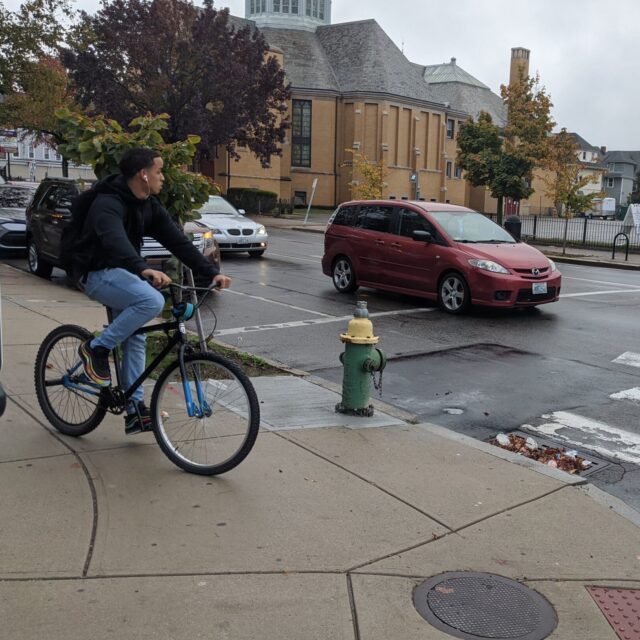Bike Fatalities Are Worse For Black and Hispanic Americans
by Kiran Herbert, Communications Manager
June 22, 2022
A new study highlights how Black riders are more than 4.5x as likely to die while riding a bike than white ones on a per-mile basis.

A new study from researchers at Boston and Harvard Universities highlights the disparity in traffic fatalities according to race and mode, with Black and Hispanic bicyclists more likely to die while riding than their white counterparts. Authors Matthew A. Raifman, MPP, and Ernani F. Choma, Ph.D., found that fatality rates per 100 million miles traveled are systemically higher for Black and Hispanic Americans for all modes — and notably higher for vulnerable modes like bicycling and walking.
For every 100 million miles traveled, there are 34 deaths amongst Black bicyclists compared to 7.5 deaths for white bicyclists. Likewise, Hispanic riders have a 70% higher per-mile fatality rate than their white counterparts. The same elevated rates held true for Black and Hispanic pedestrians when compared to White ones covering the same amount of ground. Although Asian bikers and pedestrians died significantly less often than all other racial groups, the study nonetheless highlights the gross inequity experienced by BIPOC riding and walking in America (This study did not include Indigenous Americas but earlier research found that all-mode traffic fatalities were higher for Indigenous and Black Americans than for White and Asian Americans.)
The elevated fatality rates for Black residents are especially shocking if you consider that they were found to travel relatively fewer miles on foot or bike than other groups considering their share of the population. The study includes both bicycling miles logged for transportation and recreation and unsurprisingly, White cyclists tended to log the most miles. In speaking with Streetsblog, Raifman explained that white riders are more likely to have access to long, connected networks of low-stress routes.
“The ability to safely bike 40 miles on a rail-to-trail line in the suburbs is very different from the ability to ride a few blocks on a sharrow in a city,” says Raifman.
It makes sense that a disparity in access to safe infrastructure would translate to a disparity in fatality rates. We know from other studies that Black communities tend to be less walkable, with fewer well-maintained sidewalks and crosswalks, as well as have less investment in transit and protected bike lanes. Black residents are also more likely to live near unsafe roads with inadequate lighting, experience the unjust enforcement of bike laws, and have their neighborhoods bisected by highways.
In her 2021 book, “Right of Way,” author Angie Schmitt discusses how victims of traffic violence are disproportionately poor, people of color, immigrants, and/or elders. For Schmitt, the fact that transportation planning work is a predominantly white, male profession has translated to cities that are built around the transportation habits of one subsect of the population. As such, the different needs and habits of BIPOC, children, and the elderly are often overlooked.
The study from Raifman and Choma, titled “Disparities in Activity and Traffic Fatalities by Race/Ethnicity,” calls attention to the need for cities to address the way race coincides with traffic violence by making critical infrastructure investments. In America, we tend to prioritize efficiency over safety — this data highlights how infrastructure investments should be prioritized according to the number of fatalities, alongside things like how busy a corridor is and where it’s located. Organizations like BikeMaps.org are working to help city planners better identify critical infrastructure needs but more can be done when it comes to making equitable decisions.
Although the researchers can’t speak to what’s causing the disparities in traffic violence, there’s no excuse for not acting on the data. After all, traffic fatalities are a completely preventable public health challenge — that Black and Hispanic Americans bear the brunt of it should be deeply concerning to us all.
The Better Bike Share Partnership is funded by The JPB Foundation as a collaboration between the City of Philadelphia, the National Association of City Transportation Officials (NACTO) and the PeopleForBikes Foundation to build equitable and replicable bike share systems. Follow us on Facebook, Twitter and Instagram or sign up for our weekly newsletter. Got a question or a story idea? Email kiran@peopleforbikes.org.



